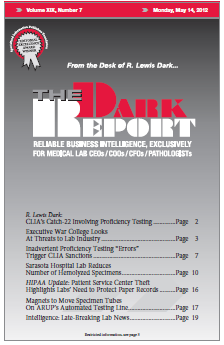CEO SUMMARY: Taken collectively, the speakers at the opening session of the 17th Annual Executive War College on Lab and Pathology Management had a powerful message to the nearly 700 attendees. After years of slow movement, a rapid transformation of the American healthcare system is about to unfold. There will be opportunities for clinical labs …
Executive War College Looks at Threats to Lab Industry Read More »
To access this post, you must purchase The Dark Report.


